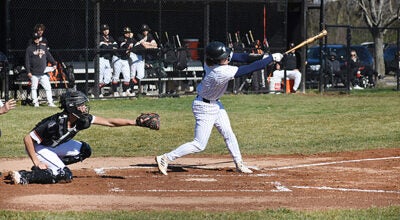Larry Lyons: What is the fate of our Gulf coast?
Published 10:25 pm Tuesday, May 25, 2010
 The Gulf Coast oil spill is now coming ashore and all of us are wondering what the effects will be and if it can ever be cleaned up.
The Gulf Coast oil spill is now coming ashore and all of us are wondering what the effects will be and if it can ever be cleaned up.
Of course, the world has never seen an oil disaster such as this and no one can answer those questions. About all we can do is look back at the 1989 Exxon Valdez oil spill in Alaska, until now the mother of all oil spills, and speculate. Over the last 20 years the spill and ensuing clean up efforts have been studied extensively. Of course, the piddling little 11 million gallons dumped by the Exxon Valdez is a mere bucket full compared to the estimated 60 million gallons already spewed out in the Gulf. Nor is there any end in sight for the constant flow of 20 more gallons every second.
So what might the effects be? Despite efforts to keep it offshore, I think it’s inevitable that a whole lot of oil is going to make landfall. Many experts are predicting that the entire shoreline from Texas to Florida will be coated. Crude oil wreaks havoc on the entire ecosystem. Most plants and nearly all wildlife coming in contact with it from microorganisms to oysters, fish, birds and animals are doomed. The area has already lost many of its protective barrier islands. Should a respectable hurricane come through while the marshes lay dead and naked the land will be rearranged beyond recognition. Over time the crude also hardens, paving over the habitat like a parking lot.
Much of this hardened oil was avoided in Alaska by clean up efforts but there’s a big difference between Alaska’s shores and that of the Gulf. Alaska’s beaches are sand, gravel and rock. People and equipment can access the beaches. You can dig up and clean sand and gravel. You can scrub oil off from rocks. But most of the Gulf coastline is An entirely different cat. It’s a vast, roadless maze of mucky marshes, bayous and channels. Between fishing excursions and working Red Cross hurricane relief I’ve seen a lot of that area. You can’t walk or take a vehicle off road because of the deep mud. The immense flats are so shallow only small, flat bottomed skiffs can access them and then only in the pockets of open water. The bulk of it is endless miles of inaccessible marsh grass.
Any attempt at a significant clean up campaign would only destroy what may have survived the oil. In fact, long term studies by NOAA on the Valdez spill indicates much of the clean up work there did more harm than good. Many areas that were left for Ma Nature to deal with recovered faster and more completely than those that were cleaned. The cleaning efforts destroyed plant and animal communities that we now know would have survived or soon rebounded. It also further dispersed the oil and pushed it deeper into the ground.
Now, 20 years later, the area of Alaska’s spill (which I’ve also been to) appears pretty much back to normal. According to NOAA clean up efforts removed 14 percent of the oil and within three years all the ocean surface oil had vanished. Over time 70 percent of the oil naturally biodegraded, simply dispersed into the water and atmosphere. Roughly 13 percent sank to the bottom and remains there today. Only two percent of the oil remains on the beaches in areas that are sheltered from wind and wave action.
While that sounds encouraging, that’s Alaska. What will happen in the shallow, muddy bottomed marshes of Louisiana is unknown. The thought of huge quantities of oil sinking and becoming trapped in the mud is scary. Will every passing boat stir up an oil slick trail? Will every hurricane churn it all up and replicate the disaster all over again? I’ve no doubt Ma Nature will eventually take care of it. She’ll soon figure out a way to replace many of the plant and animal communities that were destroyed. She proved that in Alaska. She’ll take care of the rest of it, too, but on her own time. She has many millennia to work on it. Problem is, that doesn’t fit our schedule.
Carpe diem.
Larry Lyons writes a weekly outdoor column for Leader Publications.
He can be reached at larrylyons@verizon.net






